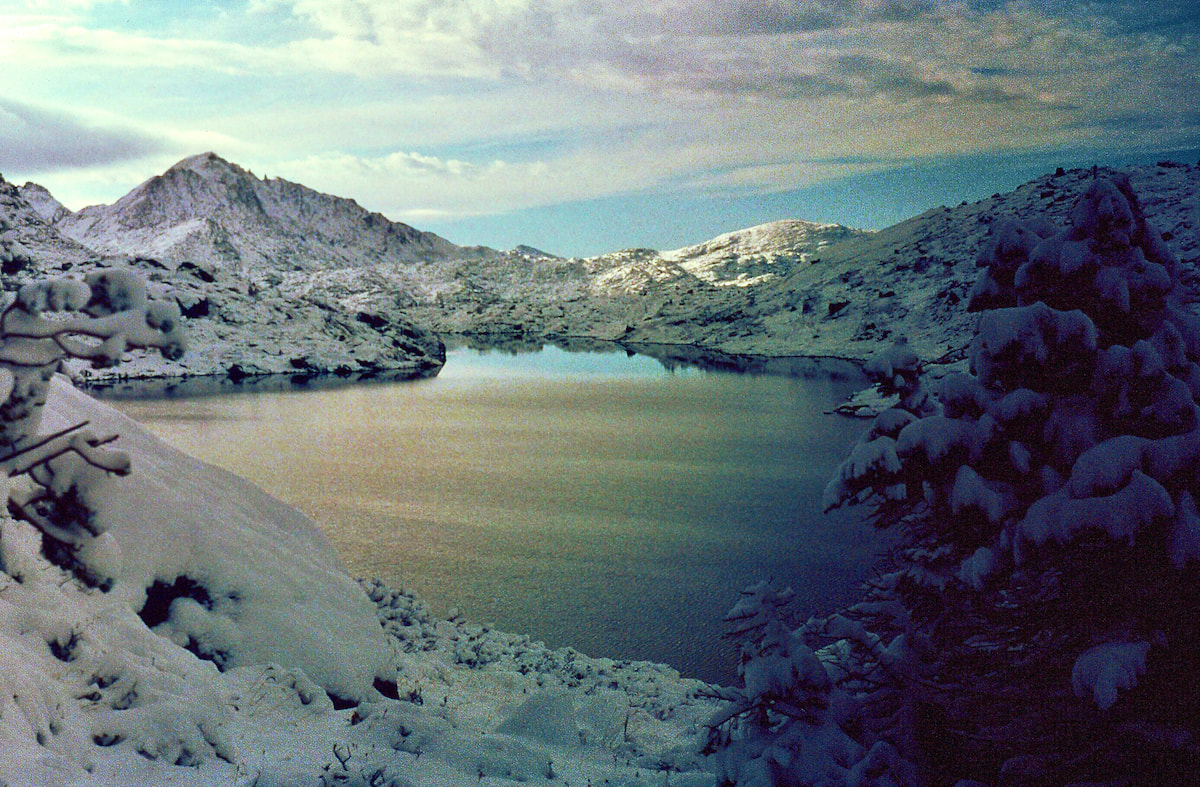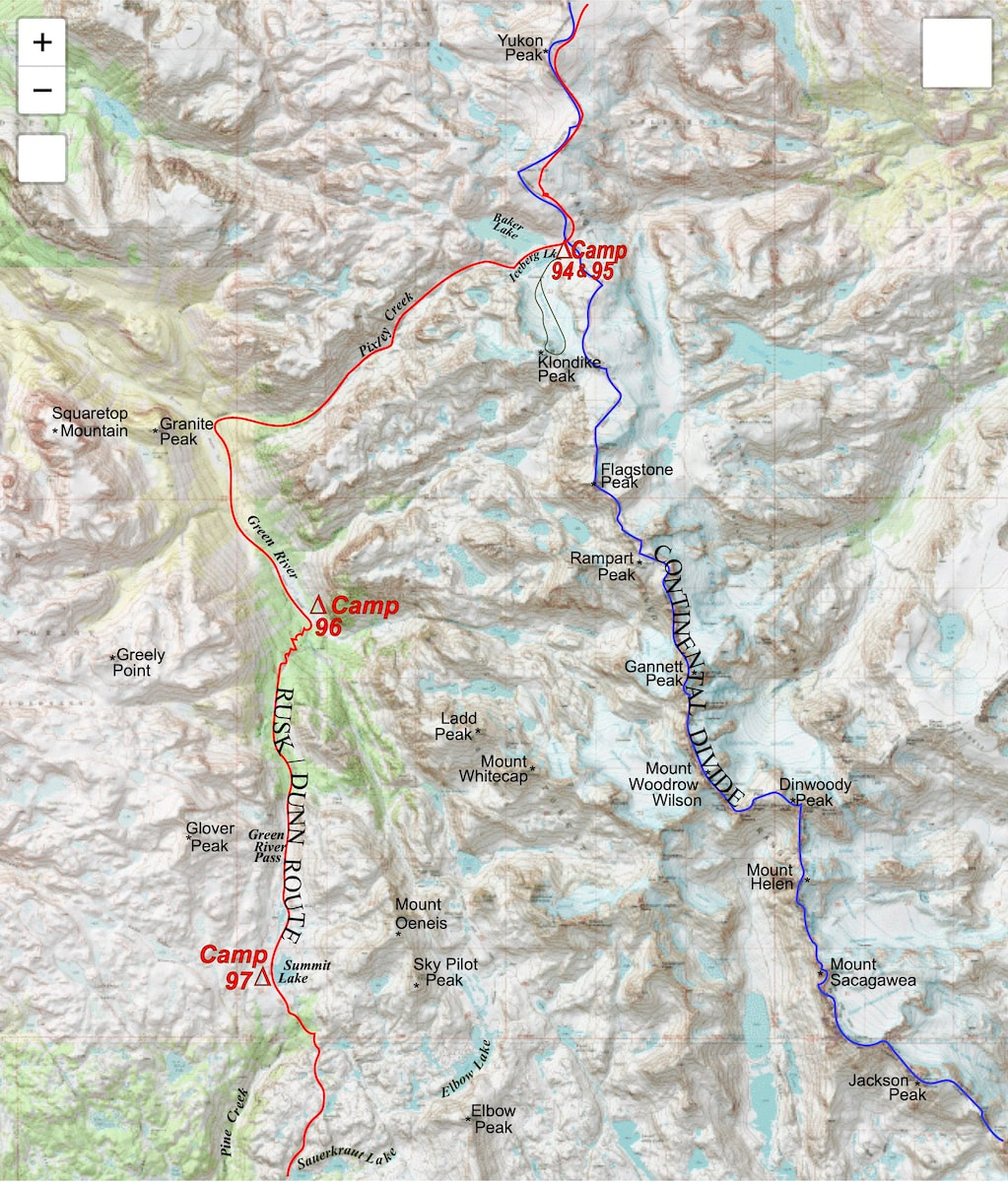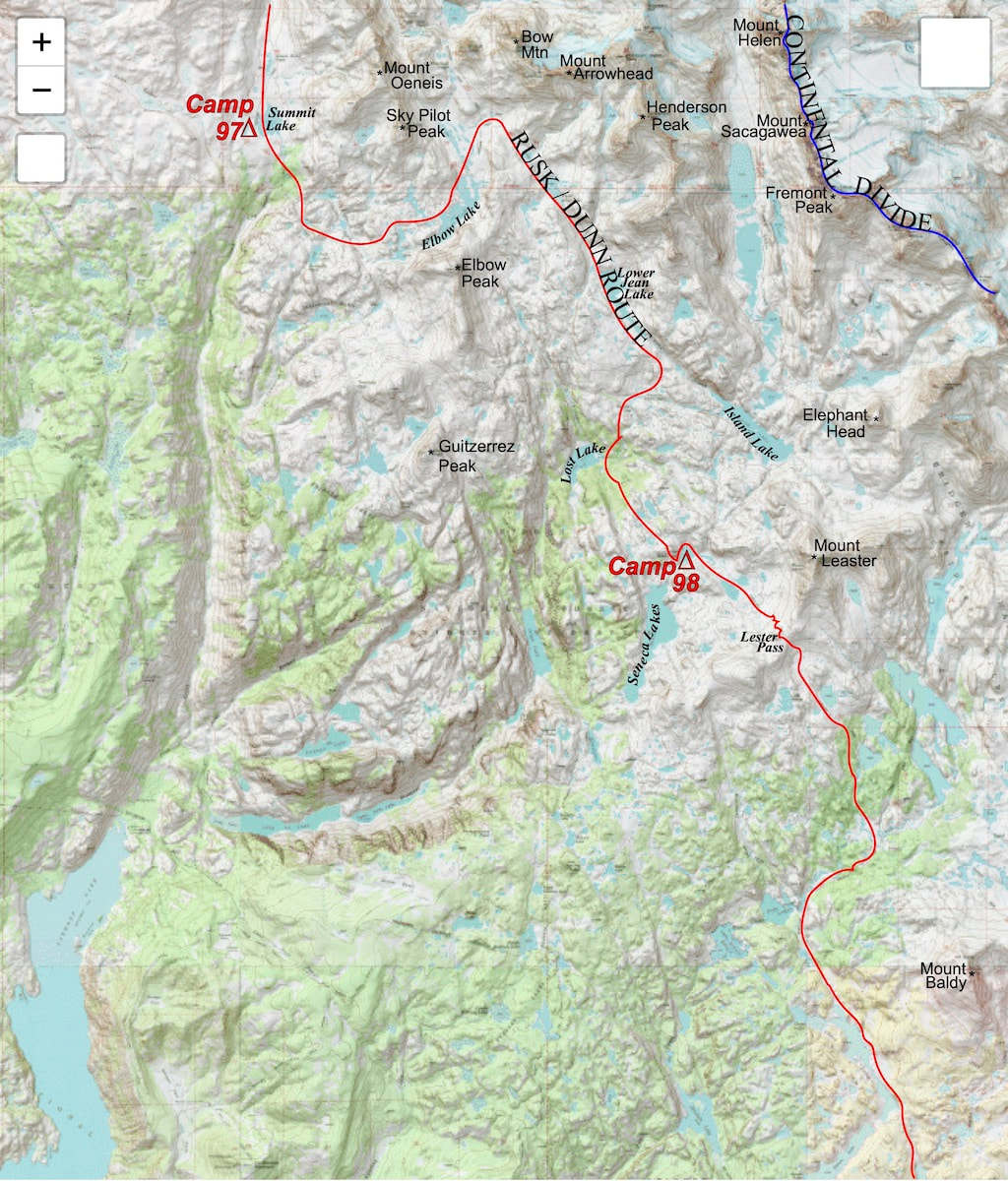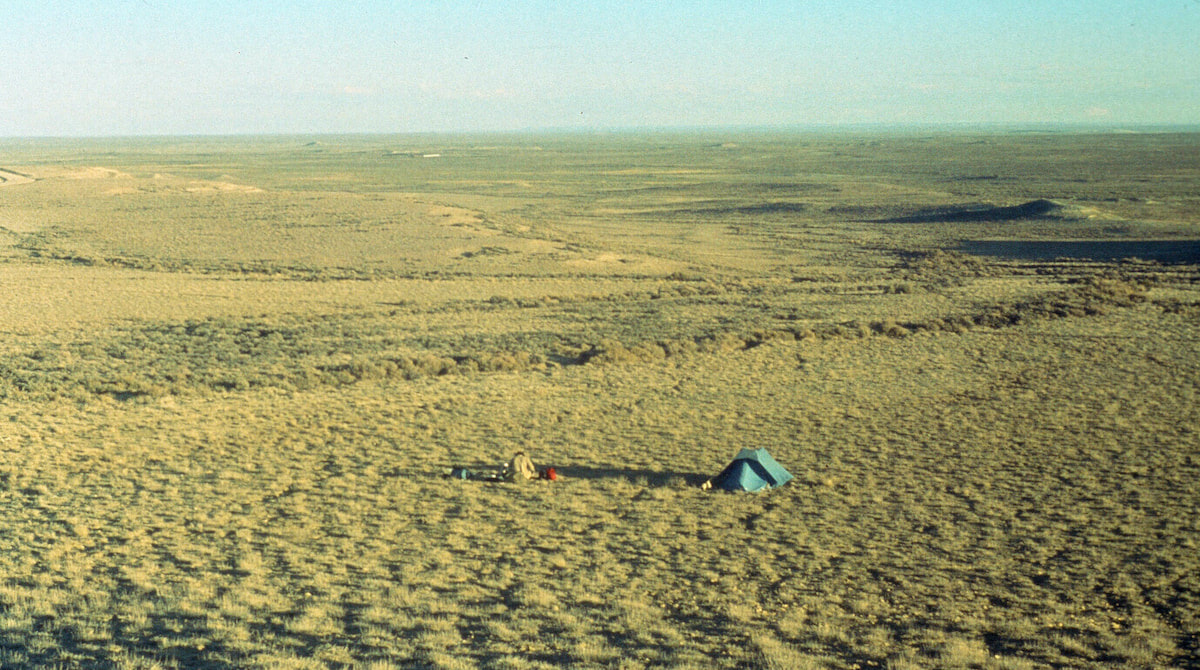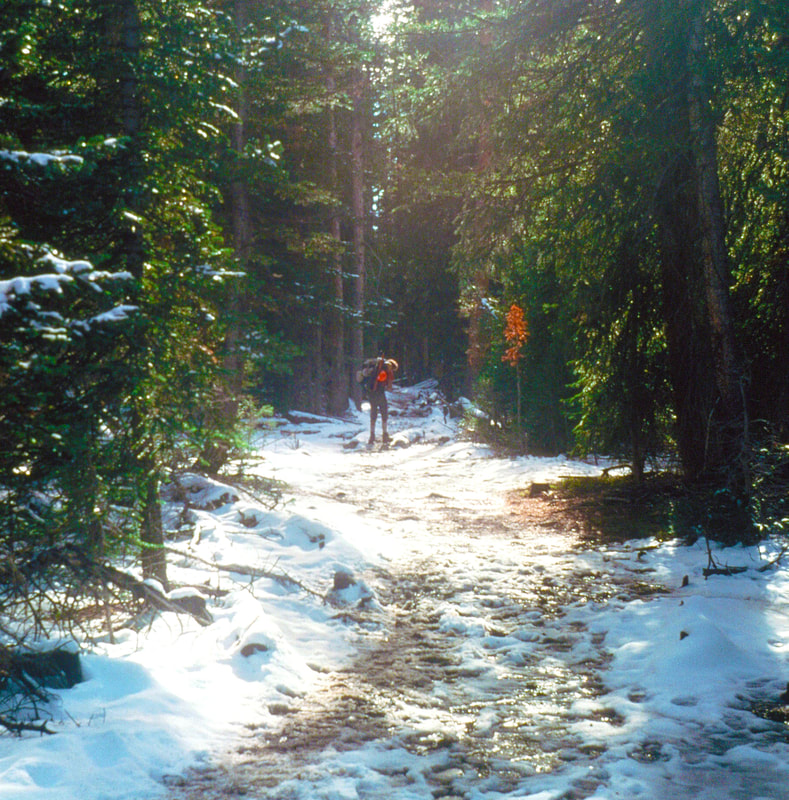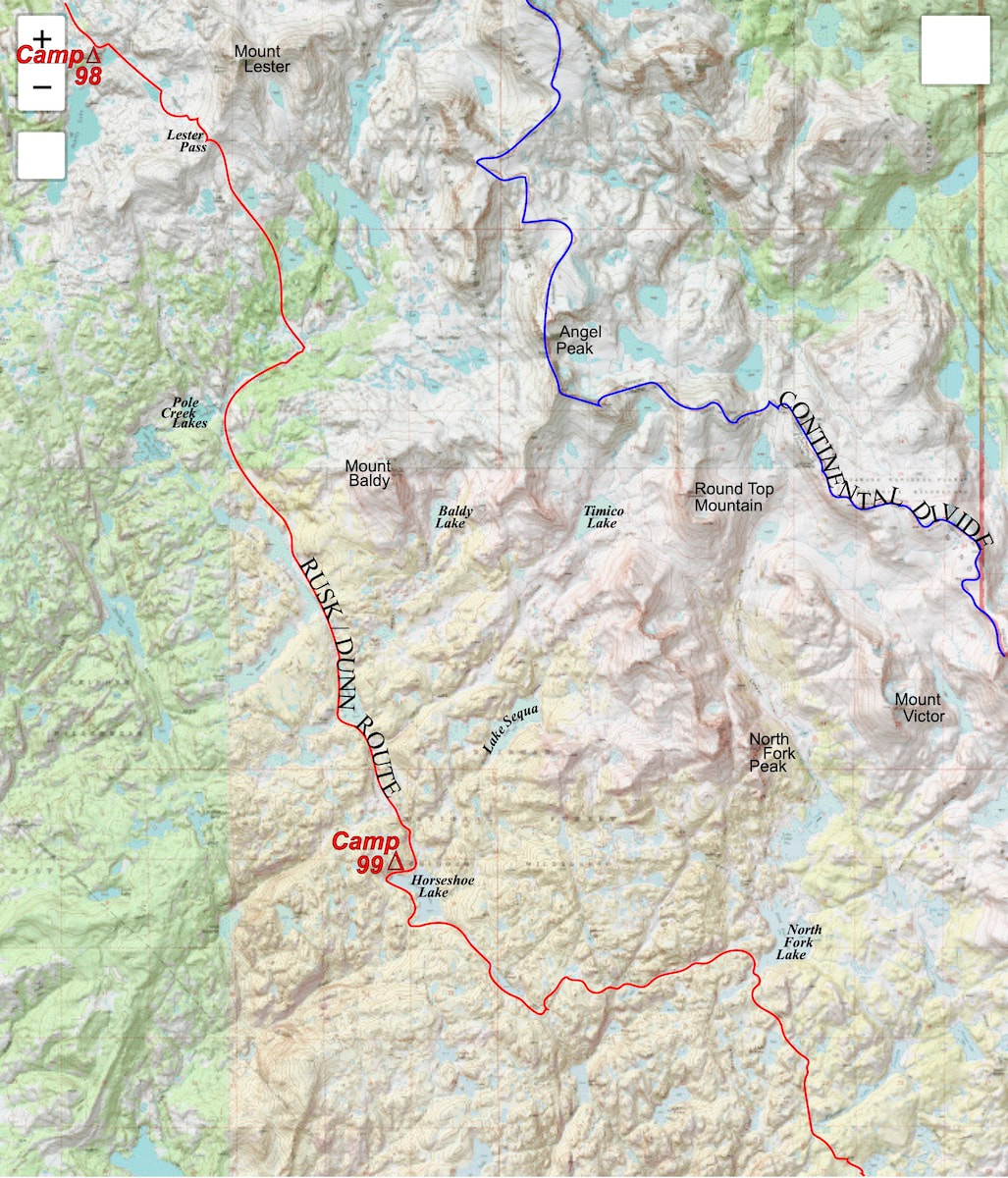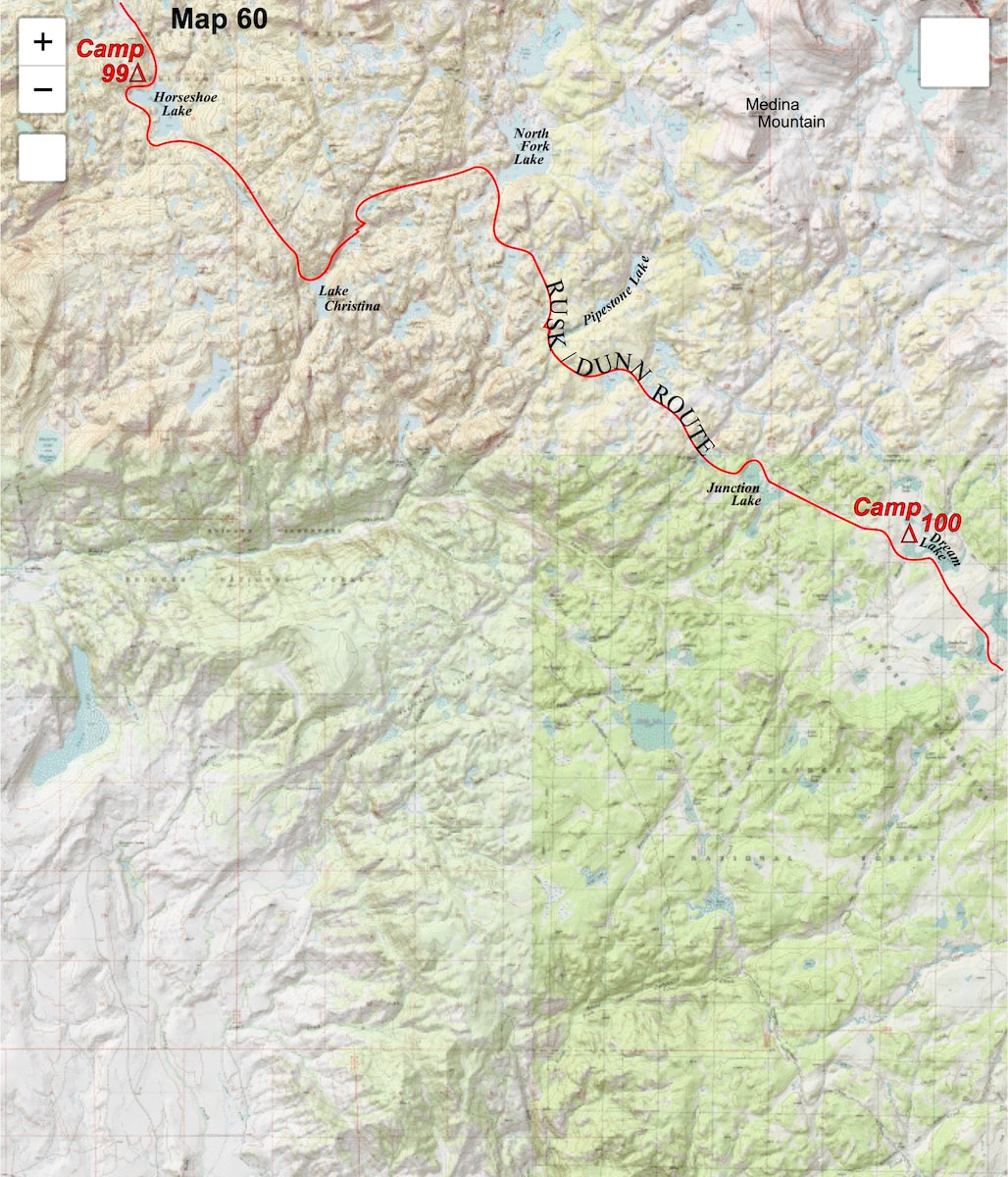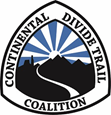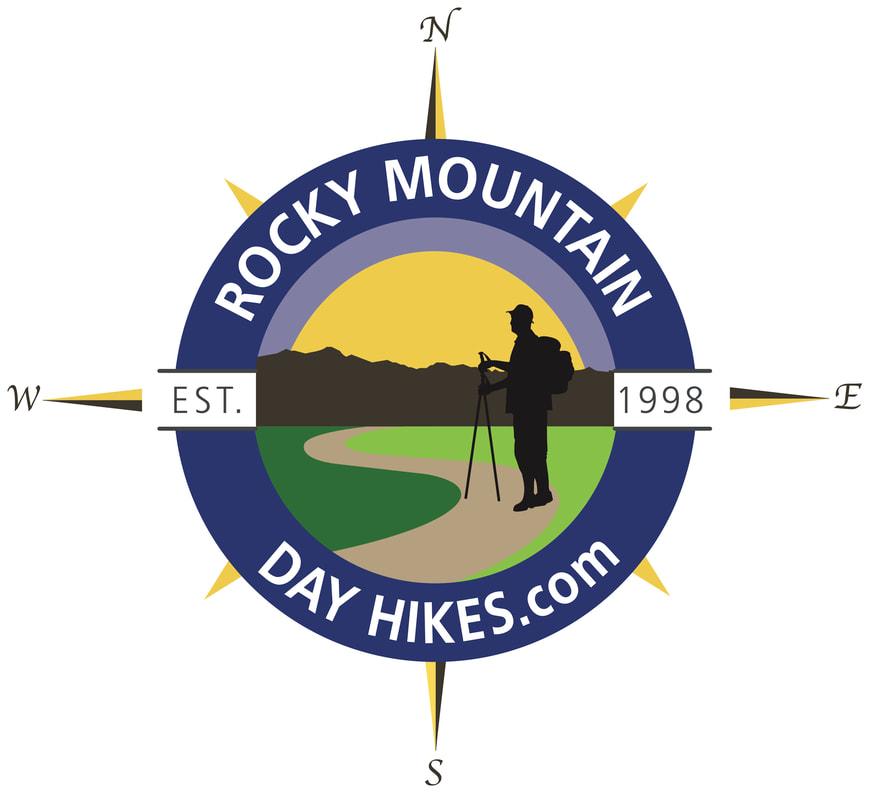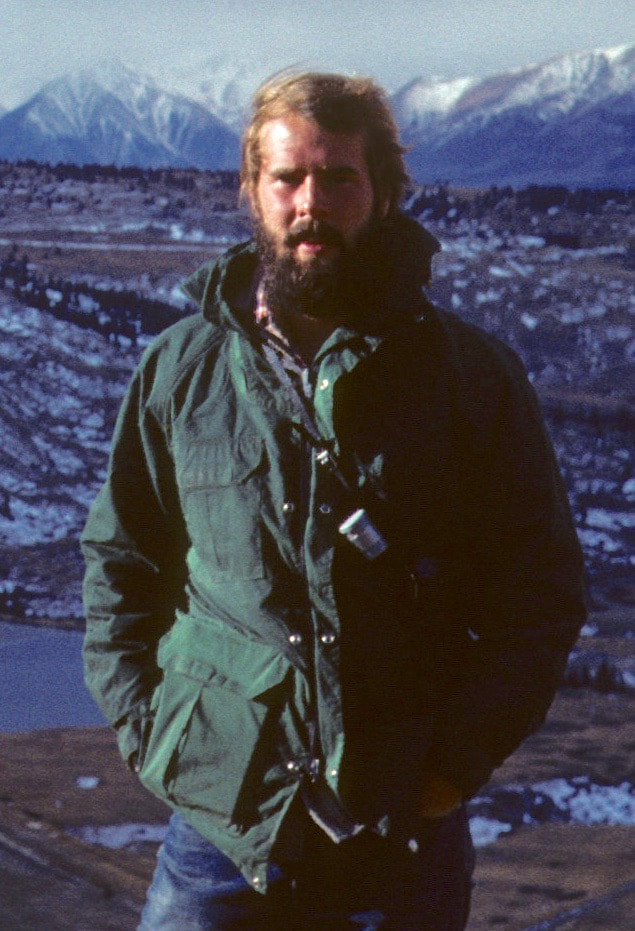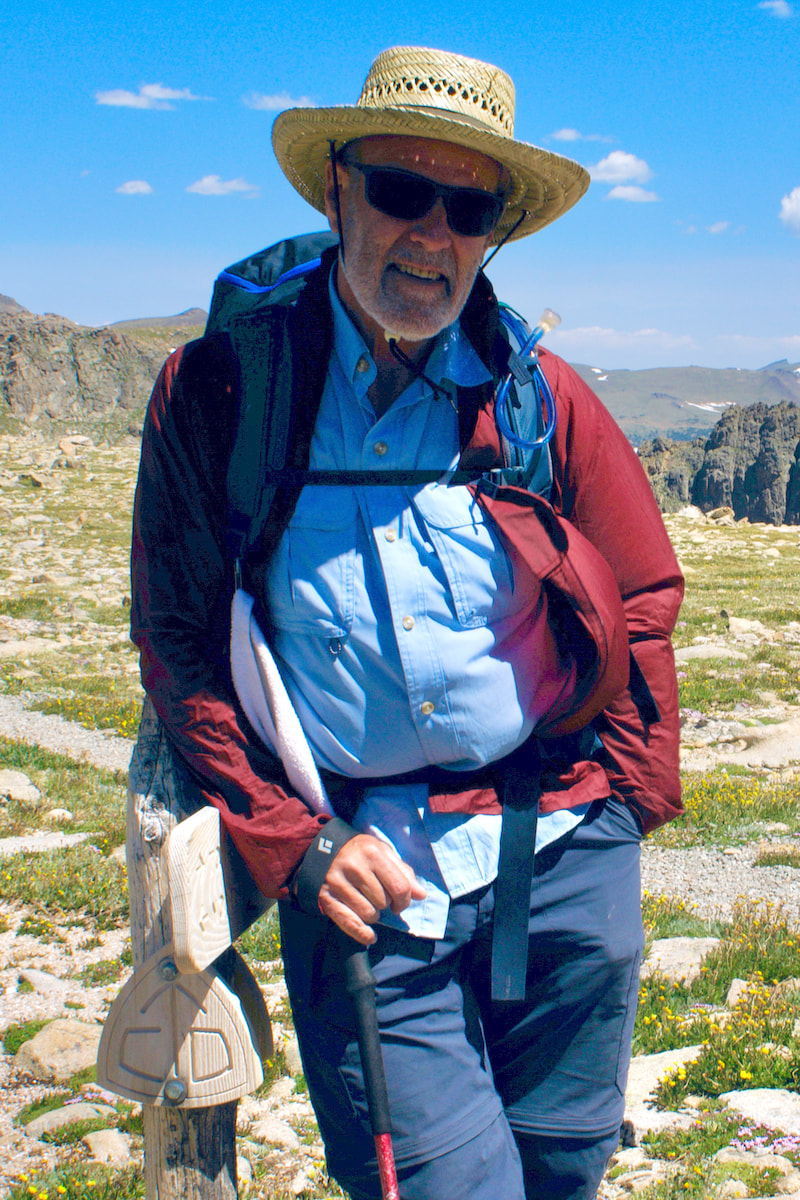The Continental
|
|
September 8th - 10th Wind Rivers, WY (Go to Pt 1) September 8 The night was dark and cold and somewhere in the pre-dawn hours it began to snow. When I awoke in the morning and heard nothing but silence I thought ‘Great, no wind!’ Then I looked out the tent door and saw four inches of snow on the ground and large flakes falling from the sky. I glanced over to where the trail had been but in the rocky tundra, four inches was all it took to completely erase its existence.
It was a good thing the terrain wasn’t difficult and the intended route of the trail easily defined by the landscape, because we were having one heck of a time trying to actually stay on the 3ft wide path, where the traction was best.
It had snowed on and off during the day and after the sun went down it was wintertime cold. We cooked supper in the vestibule of the tent and chit-chatted about the slick trail conditions but, more solemnly, wondered in low, barely audible tones if more snow would come in the night, like the weather was a terrorist about to take us hostage, which was pretty much true.
From Seneca Lakes we climbed up and over Lester Pass then made a long, gentle descent to Pole Creek, first through sparse trees then back down into the forest. At these lower elevations the snow dwindled and it became easier to make out the trail until we eventually found ourselves on the first stretch of easy hiking we’d seen since Yellowstone. Once down to Pole Creek Lakes I dropped my pack to wait for Craig.
Craig was still a ways back up the trail so I scouted out a good tent site then went back to get my pack just as he was arriving at the lake. He didn’t offer up any excuses or complaints when he arrived and we got busy with the camp set-up and supper going on the stove. We didn’t talk much, but then, being worn out will do that.
The topography was mostly lumpy, rocky and interesting to navigate, since the trail was faint and a little random in places. Craig and I ate lunch together and after that I saw very little of him until late in the afternoon.
Go to Part 52
0 Comments
Leave a Reply. |
Kip RuskIn 1977, Kip Rusk walked a route along the Continental Divide from Canada to Mexico. His nine month journey is one of the first, documented traverses of the US Continental Divide. Montana Part 1 - Glacier Ntl Pk Part 2 - May 11 Part 3 - May 15 Part 4 - May 19 Part 5 - May 21 Part 6 - May 24 Part 7 - May 26 Part 8 - June 2 Part 9 - June 5 Part 10 - June 7 Part 11 - June 8 Part 12 - June 11 Part 13 - June 12 Part 14 - June 15 Part 15 - June 19 Part 16 - June 23 Part 17 - June 25 Part 18 - June 27 Part 19 - June 30 Part 20 - July 5-6 Part 21 - July 7-8 Part 22 - July 9-10 Part 23 - July 11-15 Part 24 - July 17-18 Part 25 - July 18-19 Part 26 - July 19 Part 27 - July 20-21 Part 28 - July 22-23 Part 29 - July 24-26 Part 30 - July 26-30 Part 31 - July 31-Aug 1 Part 32 - Aug 1-4 Part 33 - Aug 4-6 Part 34 - Aug 6 Part 35 - Aug 7-9 Part 36 - Aug 9-10 Part 37 - Aug 10-13 Wyoming Part 38 - Aug 14 Part 39 - Aug 15-16 Part 40 - Aug 16-18 Part 41 - Aug 19-21 Part 42 - Aug 20-22 Part 43 - Aug 23-25 Part 44 - Aug 26-28 Part 45 - Aug 28-29 Part 46 - Aug 29-31 Part 47 - Sept 1-3 Part 48 - Sept 4-5 Part 49 - Sept 5-6 Part 50 - Sept 6-7 Part 51 - Sept 8-10 Part 52 - Sept 11-13 Part 53 - Sept 13-16 Part 54 - Sept 17-19 Part 55 --Sept 19-21 Part 56 Sept 21-23 Part 57 - Sept 23-25 Part 58 - Sept 26-26 Colorado Part 59 - Sept 26 Part 60 - Sept 30-Oct 3 Part 61 - Oct 3 Part 62 - Oct 4-6 Part 63 - Oct 6-7 Part 64 - Oct 8-10 Part 65 - Oct 10-12 Part 66 - Oct 11-13 Part 67 - Oct 13-15 Part 68 - Oct 15-19 Part 69 - Oct 21-23 Part 70 - Oct 23-28 Part 71 - Oct 27-Nov 3 Part 72 - Nov 3-5 Part 73 - Nov 6-8 Part 74 - Nov 9-17 Part 75 - Nov 19-20 Part 76 - Nov 21-26 Part 77 - Nov 26-30 Part 78 - Dec 1-3 New Mexico Part 79 - Dec 3-7 Part 80 - Dec 8-11 Part 81 - Dec 12-14 Part 82 - Dec 14-22 Part 83 - Dec 23-28 Part 84 - Dec 28-31 Part 85 - Dec 31-Jan2 Part 86 - Jan 2-6 Part 87 - Jan 6-12 Part 88 - Jan 12-13 Part 89 - Jan 13-16 Part 90 - Jan 16-17 Part 91 - Jan 17 End |
© Copyright 2025 Barefoot Publications, All Rights Reserved

